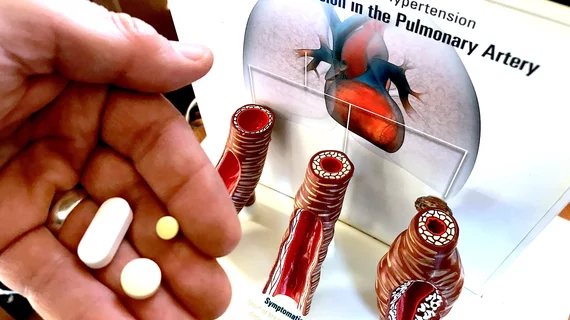Higher copayments lowered adherence for pulmonary artery hypertension medications
Not surprisingly, the more a patient has to pay for medications, the less likely they are to take them and become noncompliant. This was the finding of a new study showing how copayments may be a barrier to patients taking prostanoids and combination therapy for pulmonary arterial hypertension (PAH).
The study by the University of Pittsburgh Medical Center was published Nov. 12 in the Journal of the American Heart Association (JAHA).[1]
"Although effective, pharmacologic treatment carries substantial economic burden, with mean monthly prescription cost estimated at $4,590, treatment is generally lifelong, and individuals with low‐risk features can be expected to live for at least five years. Thus, the cost of combination therapy over time is significant," the study authors wrote.
Drug treatment for PAH improves exercise capacity, functional class and hemodynamic indexes. But, monthly prescription costs are a major driver of noncompliance, so researchers examined associations between medication copayment and annual household income and the relation medication adherence.
The study used administrative claims data from an insured population in the United States to identify individuals diagnosed with PAH between 2015 and 2020. In a data set of insured individuals, medication copayment was associated with adherence to disease‐specific therapies. But, patients with higher copayments had markedly decreased adherence to prostanoids and combination therapy with endothelin receptor antagonists and phosphodiesterase type‐5 inhibitors.
"Previous studies have demonstrated that increases in copayment, specifically, are related to decreased adherence to lipid‐lowering agents and antihypertensives," the researchers said. "Moreover, lowering out‐of‐pocket medication costs has been associated with reduced health care disparities for those with chronic cardiovascular disease."
The authors wrote the clinical implications of this study is that copayments need to be recognized as aq structural barrier to pulmonary vasodilator adherence may inform shared decision making about therapy initiation in those with pulmonary arterial hypertension. They said efforts should be made to incorporate copayment into studies examining barriers to medication adherence to pulmonary vasodilator therapies.
PAH insurance copayment and the impact on adherence details
All individuals had ≥1 medication claim for endothelin receptor antagonists, phosphodiesterase type‐5 inhibitors, prostanoids or prostacyclin receptor agonists, or the soluble guanylate cyclase stimulator riociguat. Researchers defined copayments as low, medium or high as determined by their distributions for each medication class. Annual household income was categorized as <$40,000, $40,000-$74,999 and ≥$75 000. The primary outcome was medication adherence, defined by proportion of days covered ≥80%. The study included 4,025 adults (aged 65.9±13.3 years; 71.2% women).
Compared with those with annual household income ≥$75 000, individuals in the <$40 000 and $40,000-$74,999 categories had no significant differences in medication adherence. Compared with those with low copayments, individuals with high copayments had decreased adherence to prostanoids (odds ratio [OR], 0.36 [95% CI, 0.20–0.65]; P<0.001) and combination therapy with endothelin receptor antagonist and phosphodiesterase type‐5 inhibitor (OR, 0.61 [95% CI, 0.38–0.97]; P=0.03).

